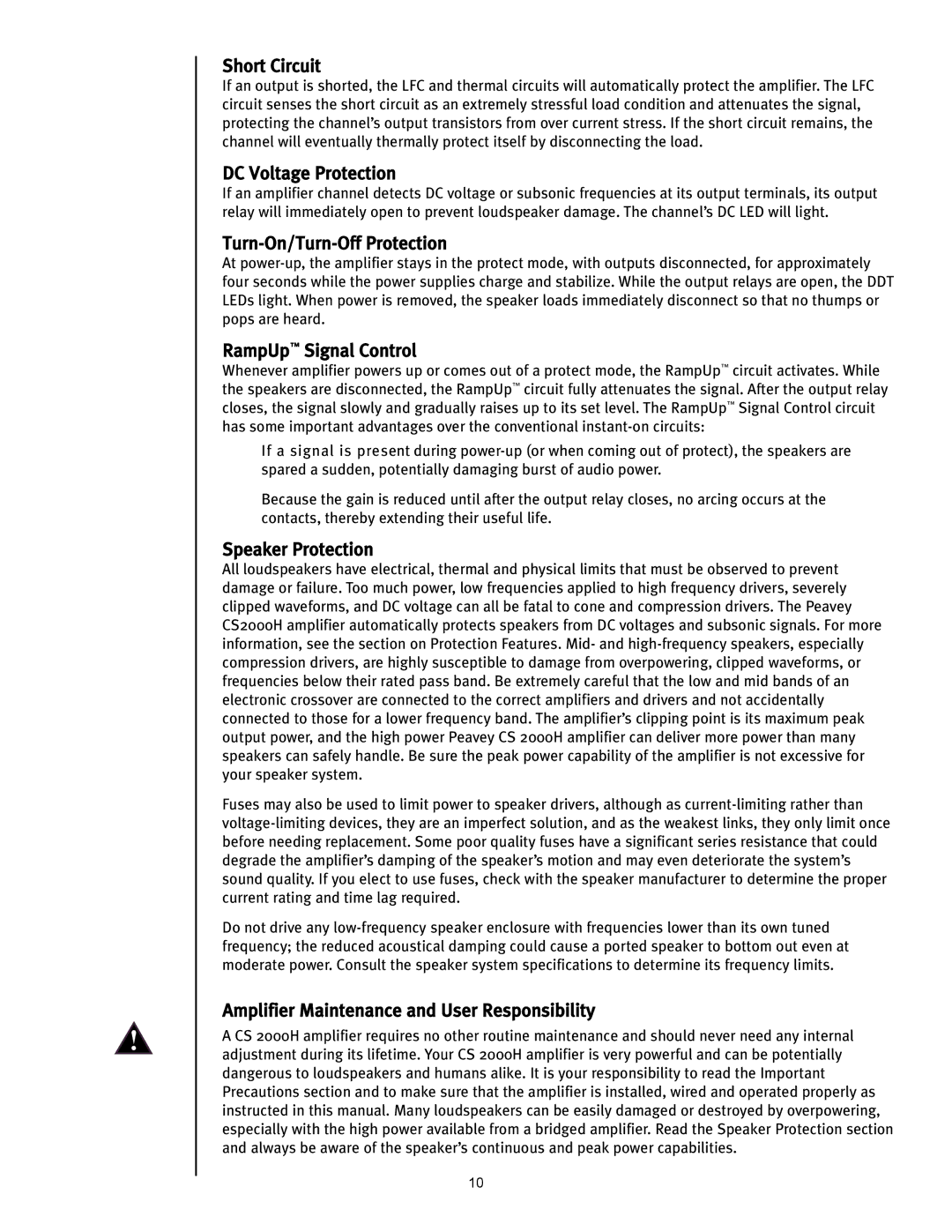
Short Circuit
If an output is shorted, the LFC and thermal circuits will automatically protect the amplifier. The LFC circuit senses the short circuit as an extremely stressful load condition and attenuates the signal, protecting the channel’s output transistors from over current stress. If the short circuit remains, the channel will eventually thermally protect itself by disconnecting the load.
DC Voltage Protection
If an amplifier channel detects DC voltage or subsonic frequencies at its output terminals, its output relay will immediately open to prevent loudspeaker damage. The channel’s DC LED will light.
Turn-On/Turn-Off Protection
At
RampUp™ Signal Control
Whenever amplifier powers up or comes out of a protect mode, the RampUp™ circuit activates. While the speakers are disconnected, the RampUp™ circuit fully attenuates the signal. After the output relay closes, the signal slowly and gradually raises up to its set level. The RampUp™ Signal Control circuit has some important advantages over the conventional
If a signal is present during
Because the gain is reduced until after the output relay closes, no arcing occurs at the contacts, thereby extending their useful life.
Speaker Protection
All loudspeakers have electrical, thermal and physical limits that must be observed to prevent damage or failure. Too much power, low frequencies applied to high frequency drivers, severely clipped waveforms, and DC voltage can all be fatal to cone and compression drivers. The Peavey CS2000H amplifier automatically protects speakers from DC voltages and subsonic signals. For more information, see the section on Protection Features. Mid- and
Fuses may also be used to limit power to speaker drivers, although as
Do not drive any
Amplifier Maintenance and User Responsibility
A CS 2000H amplifier requires no other routine maintenance and should never need any internal adjustment during its lifetime. Your CS 2000H amplifier is very powerful and can be potentially dangerous to loudspeakers and humans alike. It is your responsibility to read the Important Precautions section and to make sure that the amplifier is installed, wired and operated properly as instructed in this manual. Many loudspeakers can be easily damaged or destroyed by overpowering, especially with the high power available from a bridged amplifier. Read the Speaker Protection section and always be aware of the speaker’s continuous and peak power capabilities.
10
